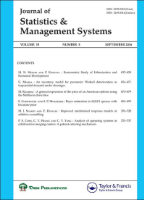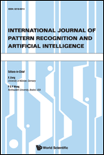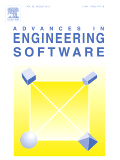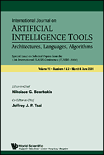
JOURNAL OF MACHINE LEARNING RESEARCH
Scope & Guideline
Unleashing the Power of Data through Rigorous Research
Introduction
Aims and Scopes
- Theoretical Foundations of Machine Learning:
The journal emphasizes rigorous theoretical analyses that underpin machine learning methodologies, including convergence rates, generalization bounds, and statistical properties of learning algorithms. - Algorithm Development and Optimization:
Research that proposes new algorithms or optimizations for existing ones, particularly in high-dimensional and non-convex settings, is a central theme, reflecting the journal's commitment to practical advancements in machine learning. - Applications of Machine Learning:
JMLR publishes studies that apply machine learning techniques to real-world problems across various domains such as healthcare, finance, and robotics, showcasing the versatility and impact of machine learning. - Interdisciplinary Approaches:
The journal encourages interdisciplinary research that integrates machine learning with other fields, such as statistics, computer science, and economics, fostering innovation and cross-pollination of ideas. - Fairness, Accountability, and Transparency:
There is a growing focus on ethical considerations in machine learning, including algorithmic fairness, bias mitigation, and transparency, reflecting the importance of responsible AI. - Data-driven and Model-based Learning:
Research that explores both data-driven learning approaches, such as deep learning and reinforcement learning, and model-based methods, including Bayesian inference and probabilistic modeling, is well-represented.
Trending and Emerging
- Reinforcement Learning Innovations:
Research on reinforcement learning, particularly in complex environments and multi-agent systems, is gaining momentum, reflecting the growing interest in applications such as robotics and game theory. - Explainable AI (XAI):
There is an increasing focus on developing methods for making machine learning models interpretable and explainable, addressing the critical need for transparency in AI systems. - Neural Architecture Search (NAS):
The trend towards automating the design of neural network architectures, including novel search algorithms and optimization techniques, is emerging as a significant area of research. - Fairness and Ethics in AI:
The exploration of fairness, accountability, and ethical considerations in machine learning is rapidly expanding, with researchers seeking to develop algorithms that mitigate bias and promote equity. - Integration of Domain Knowledge:
The incorporation of domain-specific knowledge into machine learning models, particularly through hybrid approaches that combine model-based and data-driven methods, is gaining prominence. - Federated Learning:
Research on federated learning, which enables collaborative learning across decentralized data sources while preserving privacy, is emerging as a significant area of interest.
Declining or Waning
- Traditional Statistical Methods:
There has been a noticeable decline in the publication of papers focused on classical statistical methods in favor of more modern machine learning approaches, such as deep learning and reinforcement learning. - Overparameterization Concerns:
While overparameterization was a hot topic in earlier years, recent publications indicate a shift towards understanding practical implications and applications of overparameterized models rather than theoretical concerns. - Basic Ensemble Methods:
The focus on classical ensemble methods, such as bagging and boosting, seems to be decreasing as more complex and sophisticated ensemble techniques, including deep ensemble methods, gain traction. - Handcrafted Feature Engineering:
With the rise of deep learning and automated feature extraction methods, there is a declining emphasis on traditional handcrafted feature engineering techniques in recent publications. - Simple Linear Models:
There is a noticeable reduction in the exploration and application of simple linear models, as researchers increasingly gravitate towards more complex and flexible modeling techniques.
Similar Journals

International Journal of Machine Learning and Cybernetics
Navigating the Evolving Landscape of Machine LearningInternational Journal of Machine Learning and Cybernetics, published by SPRINGER HEIDELBERG, serves as a pivotal platform for scholars and practitioners in the fields of Artificial Intelligence, Computer Vision, and Software Engineering. With its impressive Q2 and Q1 rankings in esteemed categories such as Artificial Intelligence and Computer Vision and Pattern Recognition, this journal boasts a commendable reputation within the academic community, further solidified by its Scopus rankings that place it in the top percentiles of its category. This journal covers critical advancements and research trends spanning the years from 2010 to 2024, facilitating knowledge exchange that drives innovation in machine learning and cybernetics. Although it operates under a subscription model, it remains accessible for extensive readership, comprising researchers, professionals, and students eager to advance their understanding in this dynamic and rapidly evolving discipline. Stay at the forefront of technology by engaging with the latest findings and methodologies published in this influential journal, identified by its ISSN 1868-8071 and E-ISSN 1868-808X.

PROGRAMMING AND COMPUTER SOFTWARE
Pioneering Research in Programming and Software SolutionsPROGRAMMING AND COMPUTER SOFTWARE is a distinguished journal committed to advancing the field of software development and programming methodologies. Published by PLEIADES PUBLISHING INC, this journal has been a valuable resource since its inception in 1978, reaching out to researchers, professionals, and students alike. With an emphasis on rigorous peer-reviewed articles, the journal holds a Q3 ranking in the realm of Software according to the latest 2023 Category Quartiles. Though it does not offer open access, the journal ensures that high-quality research is disseminated to its audience, providing insights into evolving programming techniques, software engineering challenges, and innovative solutions. With its convergence of years extending to 2024, PROGRAMMING AND COMPUTER SOFTWARE remains a pivotal publication, fostering a deeper understanding of the complexities in computer programming while supporting the broader software community.

ANNALS OF MATHEMATICS AND ARTIFICIAL INTELLIGENCE
Advancing Knowledge at the Intersection of Math and AIThe ANNALS OF MATHEMATICS AND ARTIFICIAL INTELLIGENCE, published by Springer, is a prominent journal dedicated to exploring the intersection between mathematics and artificial intelligence. With an ISSN of 1012-2443 and an E-ISSN of 1573-7470, this esteemed publication has been at the forefront of groundbreaking research since its inception in 1990, converging its focus to address emerging trends through 2024. Currently categorized in the Q3 quartile for both Applied Mathematics and Artificial Intelligence as of 2023, it holds respectable ranks within Scopus, positioning itself as a vital resource for scholars with a rank of #228 in Applied Mathematics and #217 in the realm of Artificial Intelligence. Notable for its commitment to advancing theoretical and applied methodologies, this journal serves as an indispensable platform for researchers, professionals, and students keen to deepen their understanding and innovate within these domains. Although it does not operate under an open-access model, the journal emphasizes rigorous peer-reviewed scholarship, ensuring that each published article contributes significantly to the global dialogue on number theory, machine learning, and their multifaceted applications.

Applied Computing and Informatics
Unlocking Innovations in Applied ComputingApplied Computing and Informatics, published by Emerald Group Publishing Ltd, is a prominent open-access journal that has been serving the academic community since 2011. With a focus on advancing the fields of Computer Science Applications, Information Systems, and Software, this journal has established itself as a noteworthy publication, currently ranking in the Q3 quartile for each of its categories in 2023. The journal is particularly recognized for its commitment to disseminating high-quality research, as evidenced by its impressive Scopus rankings—placing it in the 92nd percentile for Computer Science Applications and the 91st percentile for both Information Systems and Software. Based in Saudi Arabia, it adopts a global perspective, inviting contributions from researchers worldwide. With its open-access policy, Applied Computing and Informatics ensures that cutting-edge research is accessible to a broad audience, fostering collaboration and innovation within the computing and informatics disciplines. This journal is an essential resource for academics, professionals, and students seeking to keep abreast of the latest trends and developments in their field.

Journal of Statistics and Management Systems
Navigating Complexity with Statistical Excellence.The Journal of Statistics and Management Systems, published by TARU PUBLICATIONS, serves as a pivotal platform for researchers, professionals, and students in the field of statistics and management. With a focus on disseminating innovative research and methodologies that address complex statistical issues and their applications in management, this journal aims to bridge the gap between theoretical frameworks and practical implementations. Although currently categorized under traditional access, the journal maintains an impressive reputation for quality and integrity within its discipline. Located in New Delhi, India, it fosters a global discourse by featuring cutting-edge studies that contribute to both academic scholarship and corporate governance. As the demand for data-driven decision making continues to rise, the Journal of Statistics and Management Systems remains an invaluable resource, offering insights that are essential for steering effective management practices in various sectors.

INTERNATIONAL JOURNAL OF PATTERN RECOGNITION AND ARTIFICIAL INTELLIGENCE
Innovating Insights in Machine Learning and Computer VisionINTERNATIONAL JOURNAL OF PATTERN RECOGNITION AND ARTIFICIAL INTELLIGENCE, published by WORLD SCIENTIFIC PUBL CO PTE LTD, is a prestigious academic journal established in 1995 that serves as a critical platform for disseminating innovative research in the rapidly evolving fields of artificial intelligence, pattern recognition, and computer vision. With a focus on advancing theoretical and applied methodologies, the journal aims to bridge the gap between research and practical applications, making it essential reading for researchers, professionals, and students alike. The journal holds strong rankings within its categories, placing it in the Q4 for Artificial Intelligence, Q3 for Computer Vision and Pattern Recognition, and Q3 for Software as of 2023. Despite its growing influence, it continues to provide a rich resource for studies at the intersection of machine learning and computer science. The INTERNATIONAL JOURNAL OF PATTERN RECOGNITION AND ARTIFICIAL INTELLIGENCE not only contributes to academic discourse but also acts as a catalyst for technological advancement, making a significant impact on the scientific community.

Systems Science & Control Engineering
Advancing the Frontiers of Control and Optimization.Systems Science & Control Engineering, published by Taylor & Francis Ltd, stands out as a premier open-access journal devoted to the advancement of control systems, optimization methodologies, and artificial intelligence applications within engineering. Since its inception in 2013, the journal has garnered a strong reputation evidenced by its impressive categorization in 2023, ranking Q2 in Artificial Intelligence and achieving Q1 status in both Control and Optimization and Control and Systems Engineering. With a Scopus ranking that places it among the top tier of its fields—being positioned 7th in Control and Optimization—this journal serves as an essential resource for researchers, industry professionals, and students who are seeking to publish high-quality research and stay abreast of innovative developments. The journal emphasizes the integration of theoretical frameworks with practical applications, aiming to foster interdisciplinary collaboration and stimulate future research directions in systems science.

Theory of Probability and Mathematical Statistics
Exploring the Depths of Statistical TheoryTheory of Probability and Mathematical Statistics, published by the Tarás Shevchenko National University of Kyiv, Faculty of Mechanics and Mathematics, serves as a vital resource for academics and practitioners in the field of statistics and probability. With an ISSN of 0094-9000 and E-ISSN 1547-7363, this journal aims to advance theoretical insights and practical applications related to probability theory and statistical methods. Operating from the heart of Ukraine, this journal has been influential since its inception in 2004 and continues to contribute to the academic community as it converges through a significant period until 2024. Despite currently not offering Open Access options, it maintains a respectable Q3 classification in both Statistics and Probability, highlighting its stability within the scholarly landscape. The journal's Scopus rankings further emphasize its specialization, ranking #121 in Statistics, Probability, and Uncertainty, and #203 in Mathematics, underscoring its importance for researchers, students, and professionals seeking to enrich their understanding and foster innovation in these disciplines.

ADVANCES IN ENGINEERING SOFTWARE
Innovating Solutions for Engineering Challenges.ADVANCES IN ENGINEERING SOFTWARE, published by Elsevier Science Ltd, stands at the forefront of interdisciplinary research in the realms of engineering and software development. With an impressive impact factor reflected in its Q1 and Q2 rankings in the Engineering (Miscellaneous) and Software categories, respectively, this journal serves as an essential platform for researchers and practitioners alike to disseminate innovative findings and methodologies from 1982 to the present. Strategically positioned within the United Kingdom, it engages scholars, professionals, and students by publishing high-quality articles that emphasize advancements in software applications related to engineering challenges. Although it does not currently offer open access, the journal remains highly regarded within the academic community, consistently attracting impactful research and maintaining a commendable Scopus ranking within the top tiers of both general engineering and software disciplines. Explore the latest contributions to enhance your knowledge and stay updated on trailblazing developments in engineering software.

International Journal on Artificial Intelligence Tools
Exploring the Future of AI: Where Research Meets ApplicationInternational Journal on Artificial Intelligence Tools is a pivotal platform for disseminating innovative research in the field of artificial intelligence, published by World Scientific Publishing Co. PTE LTD. Established in 2005 and running through to 2024, this journal maintains a focus on evolving AI methodologies and applications that drive technological advancement. Though currently ranked in the fourth quartile of artificial intelligence journals and holding a Scopus rank of #256 among 350 in the Computer Science category, it offers a unique avenue for researchers, professionals, and students aiming to foster their understanding and engagement with AI tools. With its dedicated publication timeline, the journal encourages submissions exploring both theoretical underpinnings and practical implementations of AI technologies. While it does not subscribe to an open-access model, the journal ensures high-quality peer-reviewed content, making it an essential resource for those seeking to contribute to and learn from the evolving field of artificial intelligence.